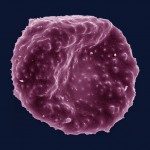Link to Pubmed [PMID] – 17890124
Microbes Infect. 2007 Sep;9(11):1307-15
Control of human leishmaniases relies on appropriate diagnosis and reliable methods for monitoring chemotherapy. The current method used for estimation of parasite burden during chemotherapy patient follow-up as well as in pharmacological studies performed in experimental models involves PCR-based assays. Compared to time-consuming conventional methods, this type of Leishmania DNA detection-based method is extremely sensitive, but could fail in distinguishing viable Leishmania from slowly degenerating ones. We have used an in vitro model to monitor the duration of Leishmania DNA persistence in mouse macrophages following exposure to l-leucine ester, a molecule otherwise known to rapidly kill intracellular Leishmania amazonensis amastigotes. At 1h of post l-leucine ester exposure, more than 98% of amastigote-loaded macrophages harbored killed parasites and parasite remnants, as assessed by microscopy. This dramatic decrease in parasite load and the microscopic parasite follow-up over the 120 h time period studied were correlated with Leishmania DNA as quantified by real-time PCR. Our results indicate that kinetoplast and nuclear parasite DNA degradation occurs very rapidly after amastigote death. These data add further weight to the argument that PCR assays represent not only a robust method for diagnosis but can also be reliable for monitoring parasite size reduction rate post any intervention (Leishmania-targeting molecules, immunomodulators…).

